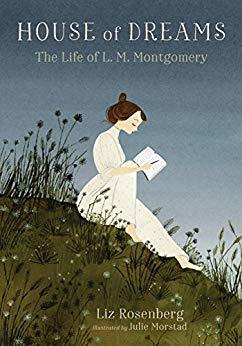More on this book
Community
Kindle Notes & Highlights
Read between
January 5 - January 6, 2021
Her mood swings were growing more pronounced and harder to manage. Maud had always been a girl of strong emotions — ranging on any given day from exuberance to despair. But now, approaching adulthood, her moods ran deeper, and the lows, in particular, brought her down further.
Maud was honing her special genius — to make the most of any situation, and to find humor under the most trying circumstances. It was a gift she would pass along to her own young fictional heroines, and a resource that upheld her for years to come.
Maud decided to spend those precious five dollars on something lasting, something that would remind her of her glorious achievement. She bought handsome bound volumes of poets Tennyson, Longfellow, Whittier, and Byron.
Life, she later argued, was just as vivid in small towns as in big cities.
Maud performed the great alchemy of art. She transformed her own history of abandonment into a story of rescue.
Margaret Atwood, a well-known Canadian author, has argued that the main love story in Anne of Green Gables plays out not between Anne and Gilbert Blythe, but between Anne and the love-starved elderly Marilla.
She wrote fast, she told Weber, “having ‘thought out’ plot and dialogue while I go about my household work.” Yet
Maud regarded the volume with the wonder of a new mother, trying not to brag — “Not a great book at all — but mine, mine, mine,” she crooned.
Maud wrote, “Color is to me what music is to some. Everybody likes color; with me it is a passion.” In mid-June, Frede
Anne’s House of Dreams, Anne Shirley tears herself from her cozy seaside house of dreams and moves to a large house in town, close to where her husband, Gilbert, works. Anne’s housemaid Susan praises the new house as such “‘a fine, big one.’ ‘I hate big houses,’ sobbed Anne.”
Her first “at homes” took place just a few days after she moved into the manse, and “thereafter on the afternoon and evening of Tuesday each week.”
Her own writing was, she confided to her journal, “as truly ‘given’ to me as any missionary’s or minister’s.”
She “shut the door of [her] soul” to distractions and retreated “into a citadel of dear thoughts and beautiful imaginings.”
In October 1911, Maud wrote in her journal: “I am contented — I may say happy. There is an absolute happiness and a comparative happiness. Mine is the latter. After the unhappiness and worry of the past thirteen years this existence of mine seems to me a very happy one.
Even when she had a house full of company, part of Maud’s mind was always occupied with whatever she was writing. Visitors witnessed these mysterious internal dialogues. Sometimes she would stand stock-still, laugh aloud as if in surprise, and murmur, “Why, that’s what I’ll do! That’s exactly what I’ll do” — and rush off to jot down a note or scene. She kept a notebook and pen in her apron pocket for these small literary “emergencies.”


